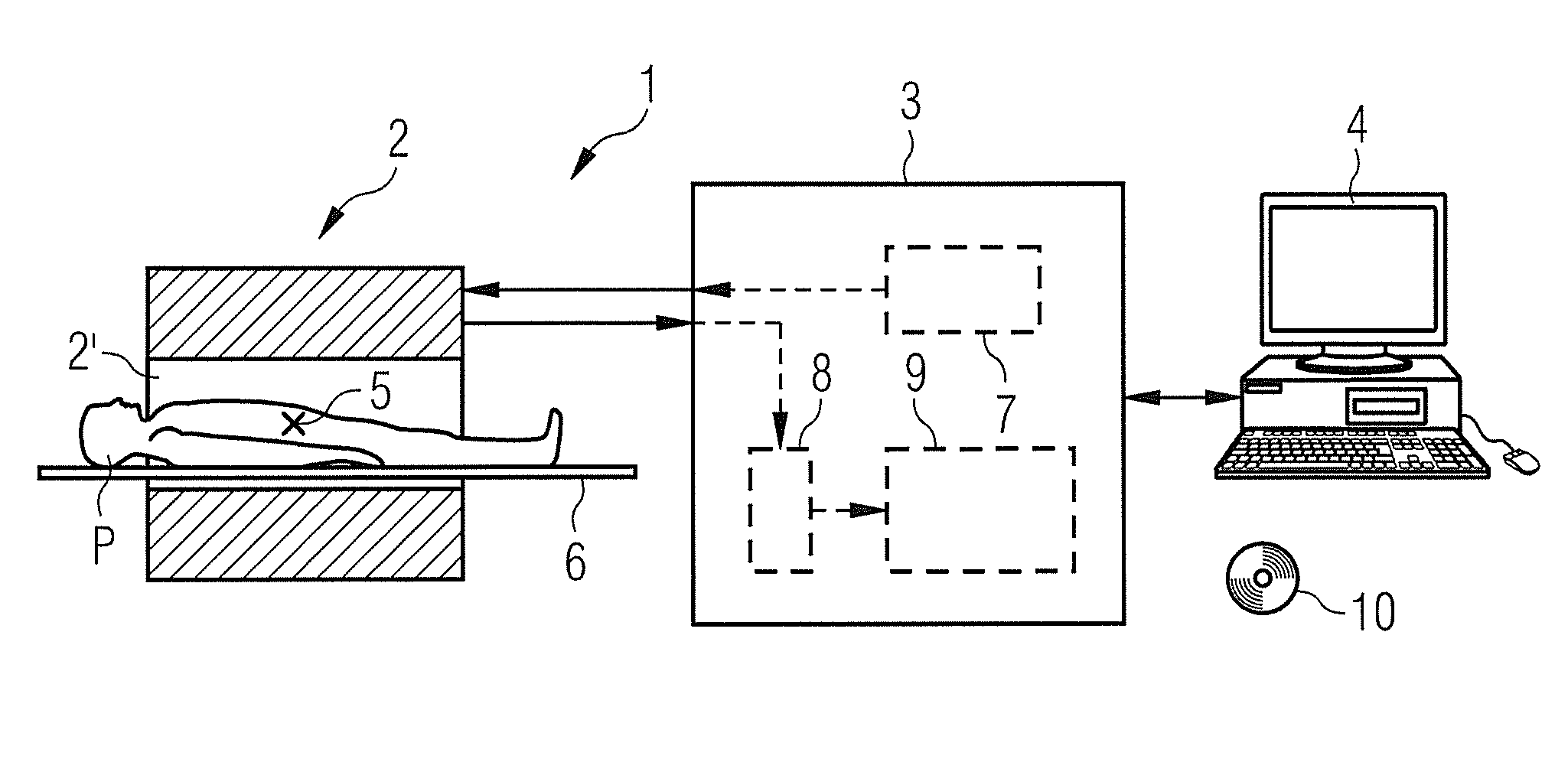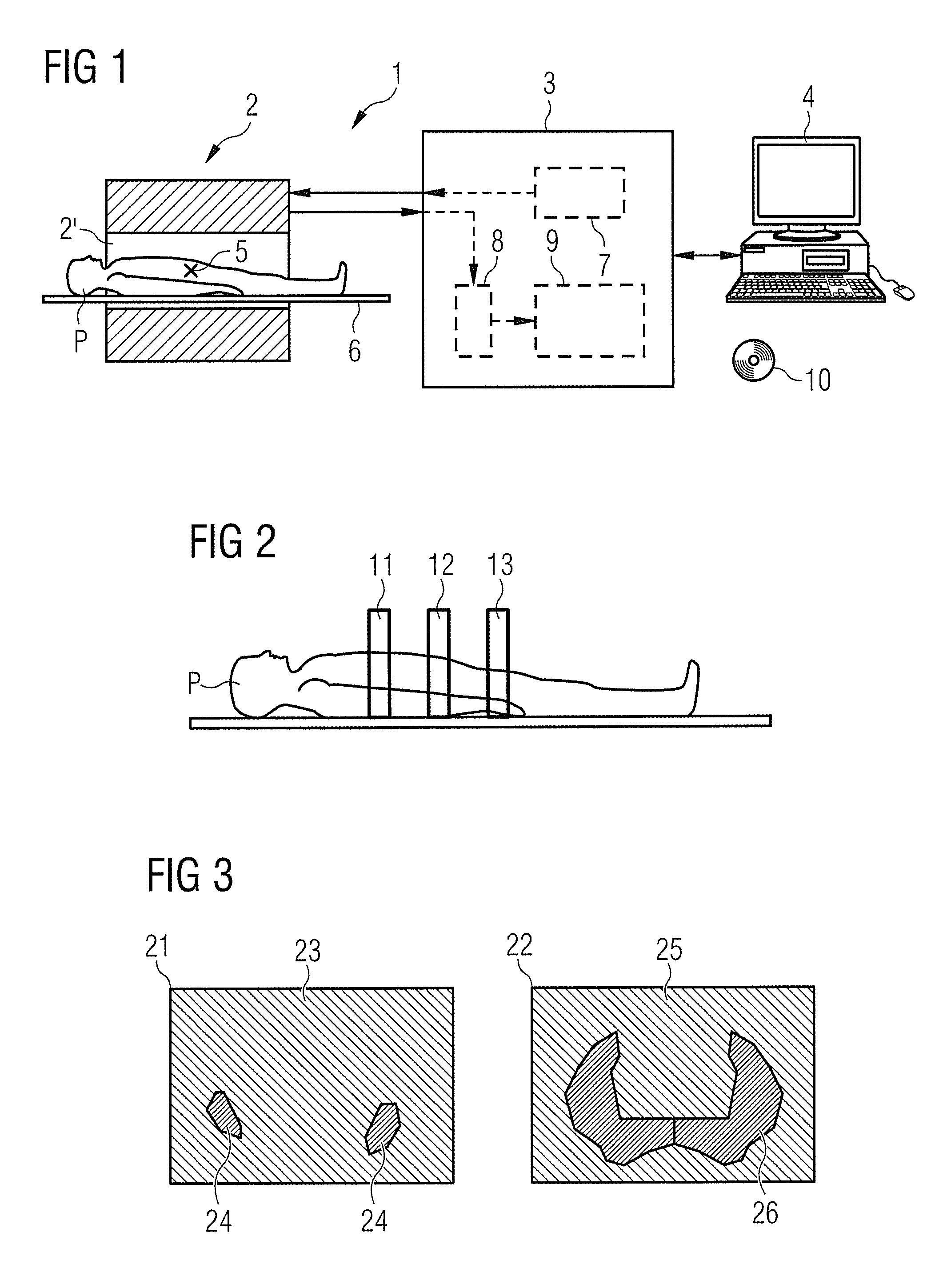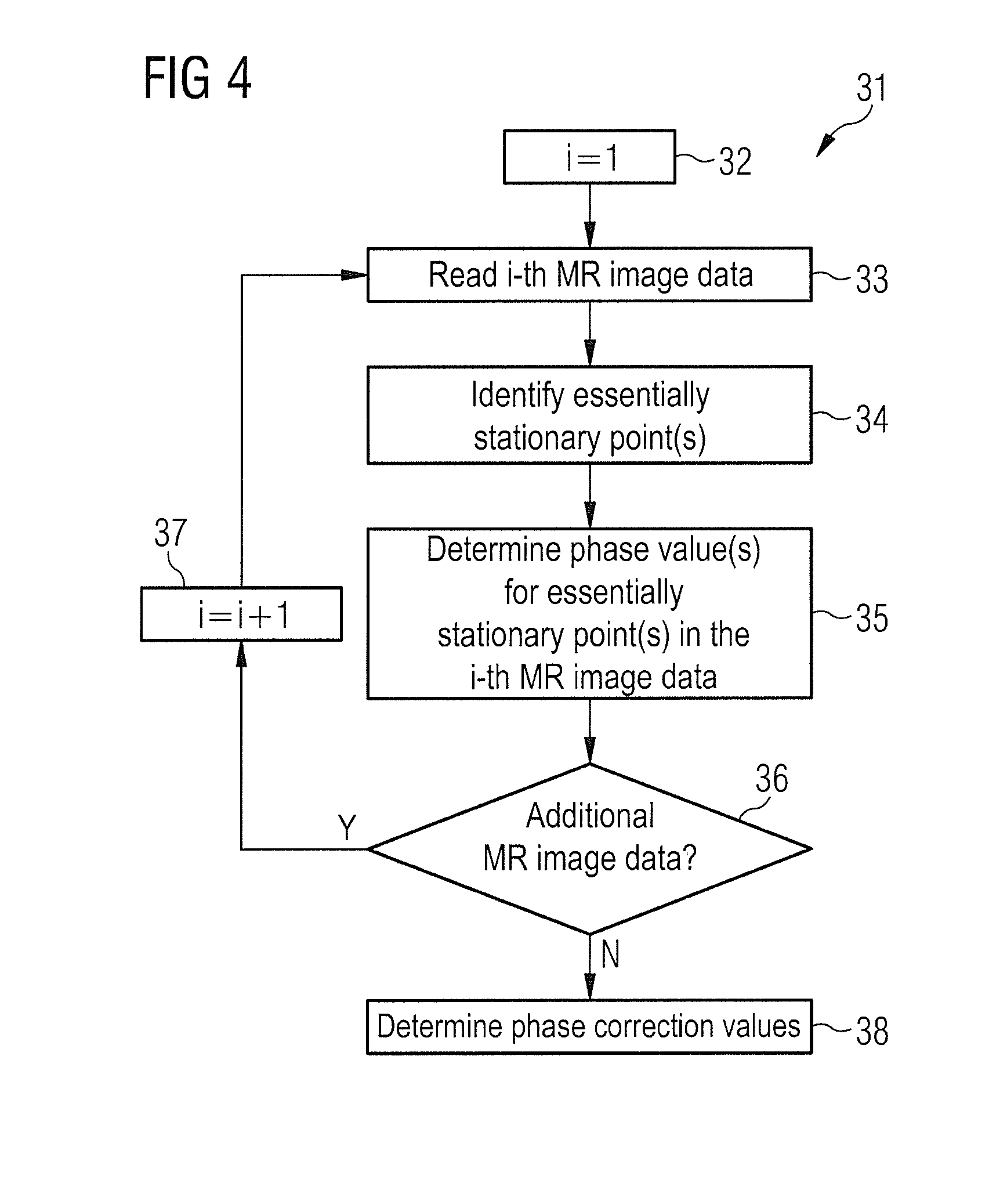Method and magnetic resonance device to determine a background phase curve
- Summary
- Abstract
- Description
- Claims
- Application Information
AI Technical Summary
Benefits of technology
Problems solved by technology
Method used
Image
Examples
Embodiment Construction
[0048]The features of the exemplary embodiments described in the following can be combined with one another insofar as this is not explicitly indicated otherwise.
[0049]FIG. 1 is a schematic representation of a magnetic resonance (MR) device 1 according to one exemplary embodiment. The MR device 1 has a scanner (data acquisition device) 2, a control device 3 and an evaluation computer 4. The scanner 2 has one or more coil arrangements with which the magnetic fields required for a data acquisition can be generated in a measurement space 2′. The isocenter of the BO field is designated 5. The scanner 2 can include gradient coils with which gradient fields for a phase-sensitive flow measurement or an angiography can be activated in order to achieve a phase coding of velocities. The scanner 2 can be configured so that the data acquisition that is required for a phase-sensitive flow measurement or angiography can be implemented by shifting time-variable, in particular bipolar gradient fiel...
PUM
 Login to View More
Login to View More Abstract
Description
Claims
Application Information
 Login to View More
Login to View More - R&D
- Intellectual Property
- Life Sciences
- Materials
- Tech Scout
- Unparalleled Data Quality
- Higher Quality Content
- 60% Fewer Hallucinations
Browse by: Latest US Patents, China's latest patents, Technical Efficacy Thesaurus, Application Domain, Technology Topic, Popular Technical Reports.
© 2025 PatSnap. All rights reserved.Legal|Privacy policy|Modern Slavery Act Transparency Statement|Sitemap|About US| Contact US: help@patsnap.com



